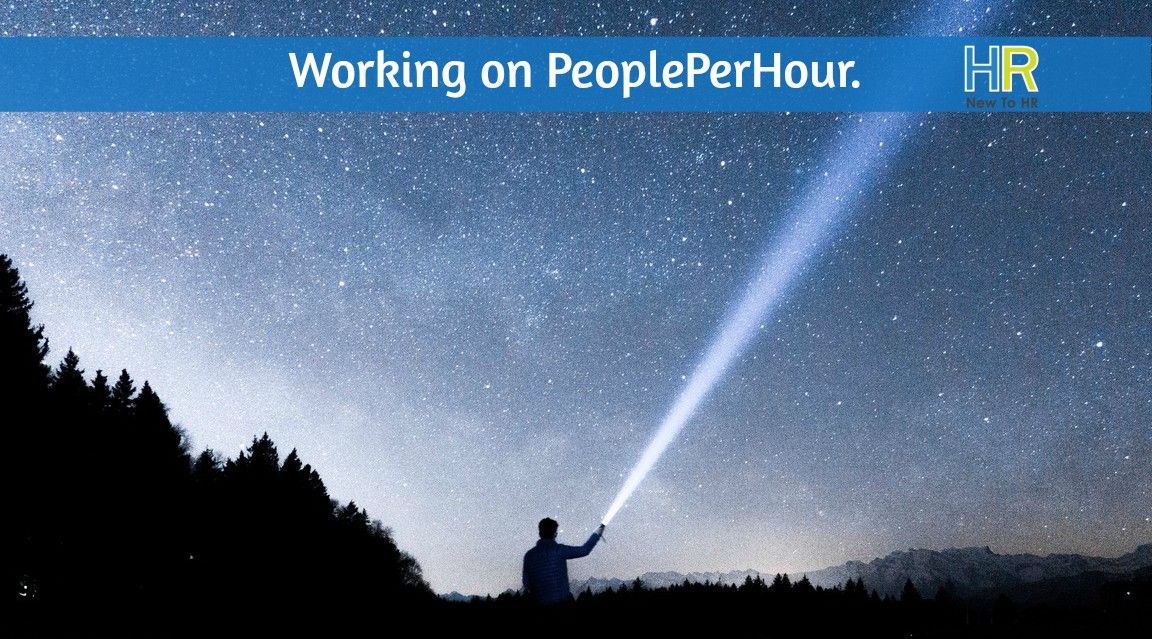
Working On PeoplePerHour
The eco-system of digital labour platforms is still in its infancy, but it is developing rapidly, linking workers with clients or companies for specific tasks, projects or services.
I mentioned in my last post, that I wanted to focus on “Online Work Platforms” (OWP) for the next weeks, such as the plaforms; Fiverr, PeoplePerHour, Freelancer and Upwork. As all of these are examples of work platforms, that help companies find and hire contingent workers (freelancers) for a range of specialised tasks.
PeoplePerHour is an online freelancing platform with headquarters in the U.K. It connects freelancers and clients who want their projects to get done. The platform is one of the most popular freelance marketplaces in the U.K. offering services for the Gig Economy, including web and graphic design, content writing, programming and of course – HR.
Read the full series on working in the REAL Gig Economy here:
How PeoplePerHour Works
Just like any other freelance platform, PeoplePerHour is like the middleman (intermediary), connecting the buyers (clients) and the sellers (freelancers). The services that can be bought via the platform, are called “Hourlies” – and each hourlie can be scaled up depending on the needs of a project. (PPP takes a percentage of each “hourlie” payment you receive)
As a freelancer on PeoplePerHour, you can get projects through two main methods:
- One method is to send proposals to clients looking to get a project done.
- Alternatively, you can advertise your own (HR) services on the platform.
What this means is that when you advertise your work, and a user (buyer) searches for that particular type of service, there is a chance that your work will be listed in the search results. Although this second method is faster for getting projects, it is not free as the first method (there are quite a lot of advertising fees attached nowadays).
If you are looking for a project to get done on PeoplePerHour, you are required to first sign up with the website (as a buyer) and then post the job that you want done.
As a buyer, you need to provide as much details of the project to make sure the right qualified people will find it. After posting and giving job specifics, you wait for seller proposals. The final steps include looking at all the proposals and deciding on the best person (look at experience/competencies/ratings), after which you can talk/negotiate with the buyer to conclude project.
My Personal Experience Working on PeoplePerHour
The article would not be complete without discussing some of my personal experience.
If you recall, in my first post in this series titled “My Experiment Of Working In The Gig Economy,” I mentioned that one of the reasons why I left freelancing online in my first stint (2013/2014), was because a number of buyers ‘ stole’ my work upon delivery and no payment was received. Those particular incidents happened on PeoplePerHour.
There is another thing that I do not like about working on PeoplePerHour (as a seller), and that is the fact that you are required to have a number of delivered client projects (as part of their general terms) and if you do not get to that amount in the first couple of months, you have to pay to keep your hourlie/service online.
- Good project requests do not come around that often on PeoplePerHour, so it is likely that you will not make the number requested, it is a particular problem that is well-know and many (new)freelancers have issues with it.
Although there are many good sides to working as a freelancer on PeoplePerHour, such as the fact that the platform has not being saturated with freelancers (yet), the fact that you can advertise your services and so on; there are still downsides with all these online work platforms. It has improved greatly and in general it is a great platform for those starting out in the Gig Economy, just be cautious.
I will continue this series with my next post, which talks about my experience working on Freelancer.com, get ready 😉
© New To HR


